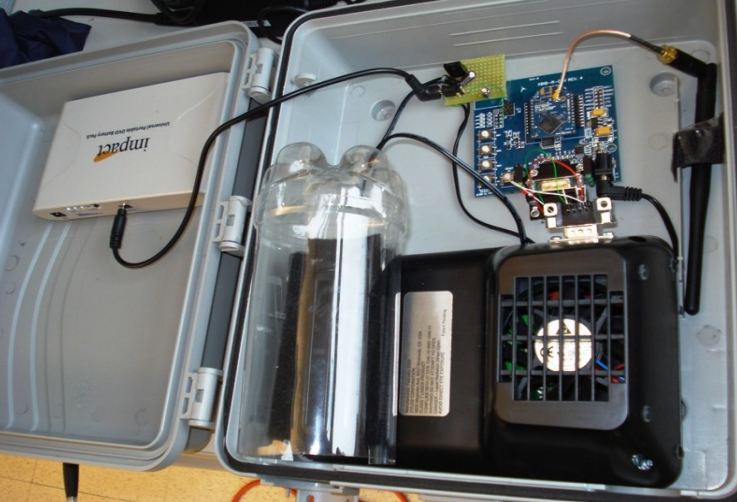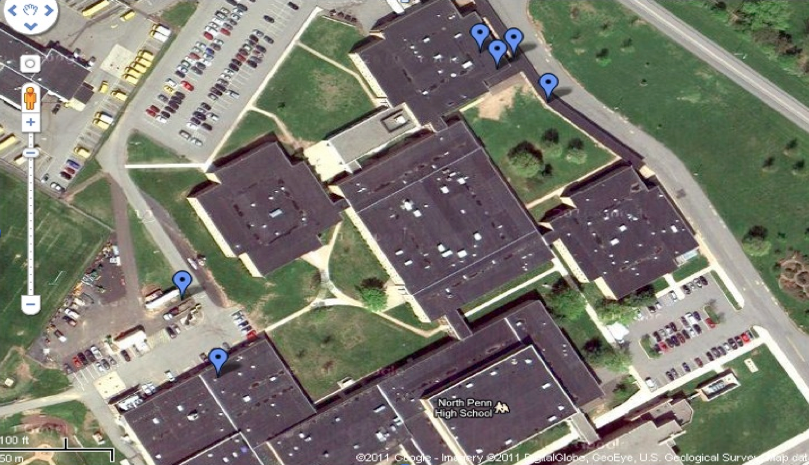Lab Sensor Networks for Homeland Security and Environmental Protection Agency
Environmental pollutants are known to have detrimental health effects, especially for populations living in areas with heavy exposure. Air quality monitoring is one way to measure the amount of these substances to assess the amount and type of pollutants present in an environment. Air monitors designed and developed in DWSL have been used to monitor particulate matter (PM) concentrations in two areas: Port Richmond, Philadelphia, and North Penn High School in Lansdale, PA. These nodes were deployed for one week at each location to measure particulate matter concentrations.
The air monitors, often referred to as air sensor nodes, consist of:
- Dylos DC1100 indoor air monitor
- Wireless transmitter (to communicate with other nodes and the base station)
- 1 or 2 batteries (depending on location of the node and ability to be connected to a power source)
- CO sensor (in selected nodes)
- Necessary circuitry to run Dylos, draw power from two batteries, and communicate wirelessly (fabricated by Drexel Engineering students and North Penn students)

There was a series of methods used to develop the particle counts as well as a strategic plan to produce the most useful results:
- Algorithm employed to produce real particle counts. Coordinated with AMS PM monitoring equipment
- Careful selection of node placement at both North Penn and AMY schools. Ability to create models of PM distributions
- Indoor and outdoor monitoring to observe differences and identifying potential thresholds

This work has provided validated small particulate matter data from one monitor for each site. At times, the pollutant levels nearly reached those recommended by the Environmental Protection Agency. Although results showed the presence of larger particulate matter, conclusive evidence is not available because of technical problems encountered with the equipment. Further deployment and validation of large particulate matter must be completed in order to effectively measure the results of the air quality study. With the validation of both sizes of particulate matter and increasing the operating capability of the network, the node system can be a valuable tool.